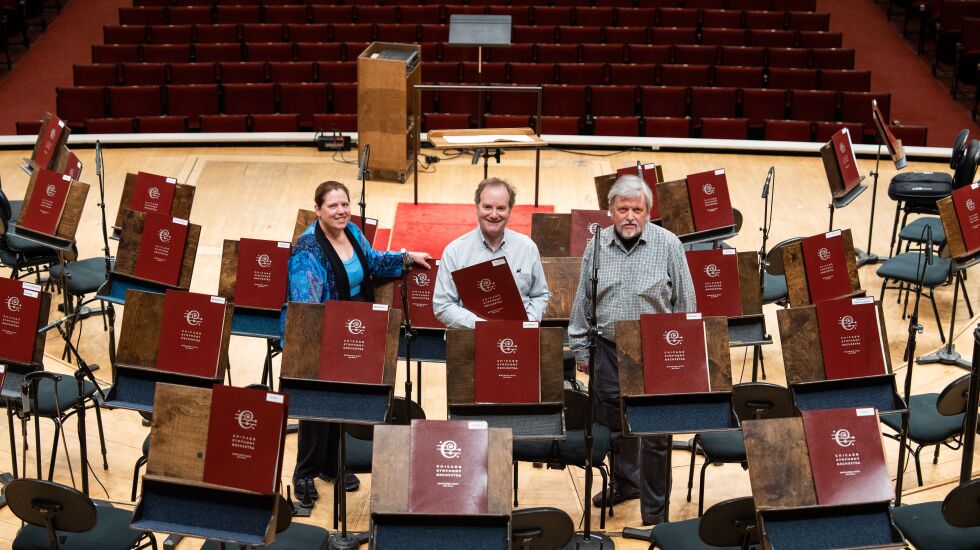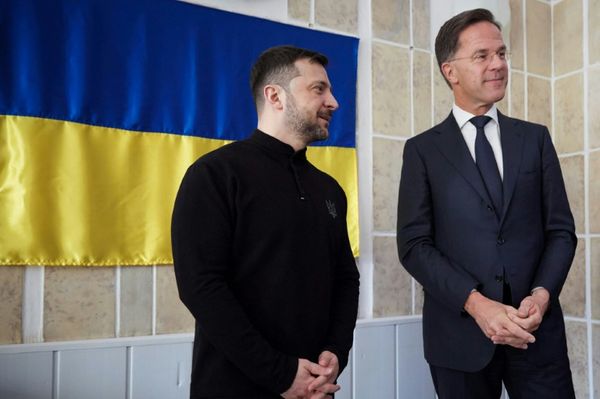
Good afternoon. Here’s the latest news you need to know in Chicago. It’s about an eight-minute read that will brief you on today’s biggest stories.
— Matt Moore (@MattKenMoore)
Weather 🌤️
This afternoon will be mostly sunny with a high near 75 degrees. Tonight, a slight chance of showers and thunderstorms with a low near 61. Showers are likely tomorrow with a high near 69.
Top story
Chicago closed 50 public schools 10 years ago. Did the city keep its promises?
Ten years ago, Chicago closed 50 schools as part of a decision by then-Mayor Rahm Emanuel — shutting down more American schools at one time than ever before.
The Sun-Times and WBEZ spent months investigating the promises made 10 years ago by city and Chicago Public Schools officials as they shuttered the schools, examining how the closings changed the city, the school system, the children and their families, and studying potential alternate solutions.
In the coming weeks, our series of stories will explore three core promises made:
- Students would be better off after their schools were closed.
- Their new schools would be transformed.
- Former school buildings would be reborn as community assets.
These promises largely have never been realized. And city and school leaders haven’t tracked the outcomes.
In justifying the closings, Emanuel said it was wrong to leave students in schools that had become severely underenrolled, were consistently low-performing and were falling apart. Those three criteria would primarily determine which schools would close and which would be spared. All but one of the schools served elementary age students.
But the consequences of the closings still reverberate long after the officials who vowed to do better by Chicago’s school children have moved on. The hurt is still palpable among families who wanted their struggling schools funded and improved, not taken away. And the neighborhoods around the closed schools suffered.
Amid continued population loss in predominantly Black communities, the immediate areas around closed schools saw steeper drops in the years after the closings, a Sun-Times and WBEZ analysis of census data found.
More news you need
- A jury has awarded $10 million to the family of Stacy Vaughn-Harrel, who was killed in a crash during a high-speed Chicago police chase in 2017. More on the jury’s decision from our Mary Norkol.
- An Indiana man is facing a gun charge as a result of a federal investigation after this month’s killing of Chicago police Officer Aréanah Preston. The 21-year-old is being held in federal custody pending a detention hearing Monday.
- Mayor Brandon Johnson’s administration yesterday distanced itself from a new proposal to raise up to $12 billion in annual revenue by taxing “income” and “wealth,” making big business pay more and dramatically reducing police spending. Saqib Bhatti, a member of Johnson’s transition team, co-wrote the report and made no apologies for including controversial ideas that demand what he called “political courage” to pursue. More on the report from our Fran Spielman.
- Tributes are pouring out for musician Gerald Sims, who died May 8 at age 83. Besides playing with many blues and soul greats as a session musician for Chess Records, Mr. Sims also at one time owned a music school and store near 79th Street and Cottage Grove Avenue. More on Mr. Sims’ life and legacy from our Mitch Dudek.
- Executives from Air Serbia and the city’s Department of Aviation marked the return yesterday of direct flights between Chicago and Belgrade after 31 years. The new route could serve 350,000 Chicago-area residents of Serbian descent, said Chicago’s aviation commissioner.
- The CTA rolled out two electric buses today along the #63 route, one of the CTA’s busiest. The route, between 63rd/Stony Island and Midway Airport, is the second route to feature electric buses.
- Hundreds of electricians and laborers yesterday joined actors supporting local members of the Writers Guild of America as they picketed outside NBC Tower in support of a strike against the Alliance of Motion Picture and Television Producers. The dispute is primarily over better pay and royalties from streaming media and job protections against artificial intelligence.
- Unionized news staffers at the Sun-Times have approved a three-year labor agreement that provides annual raises and improves some company benefits. The contract with Chicago Public Media, the nonprofit owner of the Sun-Times, covers 75 employees involved in editorial content of the website and newspaper.
A bright one ✨
Chicago Symphony Orchestra librarians know the score
Shortly before each Chicago Symphony Orchestra concert is set to begin, someone discreetly walks onstage to place a score on the conductor’s music stand, then returns to retrieve it when that first piece is over — a process repeated for each selection on the program.
Those brief, easy-to-ignore trips across the stage are the only times that audiences get a glimpse at the three staff members who work in one of the CSO’s most important if little-known behind-the-scenes departments — its library.
Located one floor below the Orchestra Hall stage, this windowless space serves as a repository for the music the orchestra owns and a work space for three librarians.

They procure the necessary scores and sets of parts for each program, prepare them for the musicians’ use and distribute them three to four weeks in advance of concerts.
“I’m part of a big picture, but I’m not on stage,” said librarian Carole Keller, who got her start as an undergraduate working part-time for the orchestra library at St. Olaf College in Northfield, Minn.
“I like being behind the scenes. I like being support. I like knowing what I do makes a difference. I feel like if I do my job to the best of my abilities, it makes what happens on stage go so much better.”
More with these librarians from Kyle MacMillan.
From the press box 🏈🏀⚾️
- The Bears are finding it’ll take more than two-minute offense to win Springfield’s help for a new stadium in Arlington Heights, Tina Sfondeles reports.
- Watching the Spurs land Victor Wembanyama sparks memories of Chicago’s joy over landing Derrick Rose, Rick Morrissey writes.
- The Sky’s Isabelle Harrison is out with an undisclosed injury as the team prepares to open its season tomorrow.
- The Cubs’ Nick Burdi is making an improbable big-league comeback, Maddie Lee reports.
- WBBM’s Dave Kerner signs off tomorrow after 26 years in Chicago radio.
Your daily question☕
A decade has passed since former Mayor Rahm Emanuel’s administration closed 50 Chicago schools. How have you seen that decision impact the city?
Email us (please include your first and last name) and we might include your answer in the next Afternoon Edition.
Yesterday we asked you: What’s your favorite part about living in your neighborhood?
Here’s some of what you said...
“We love the walkability to beautiful parks, restaurants and shopping!” — Krista N. Josh McCallum
“Albany Park has shown up for our new migrant neighbors with love, solidarity, and fierce organizing prowess. Community care runs deep here.” — Nellie Barrett
“Wonderful neighbors who help each other!” — Jennifer Palm
“In Edgewater, I love the diversity, proximity to the lake, the abundance of restaurants, shops, groceries, dogs and easy access to public transportation.” — Susan Danzig
“I live in an apartment building. I know most of the residents. We watch out for each other like family.” — Dave Martinez
Thanks for reading the Chicago Sun-Times Afternoon Edition. Got a story you think we missed? Email us here.







